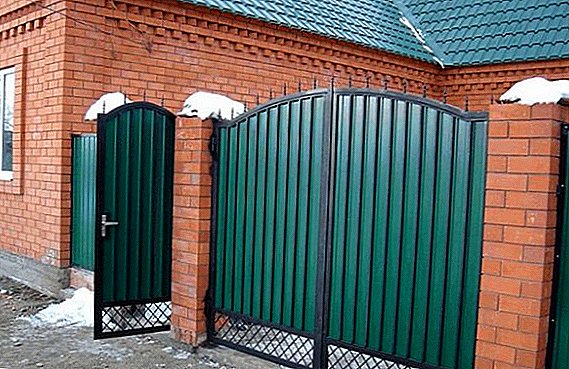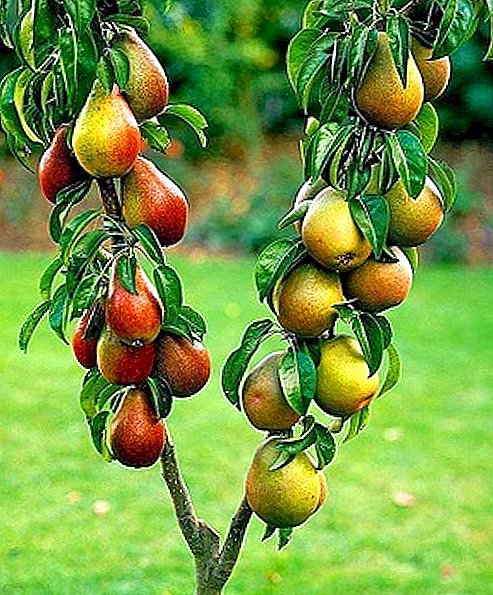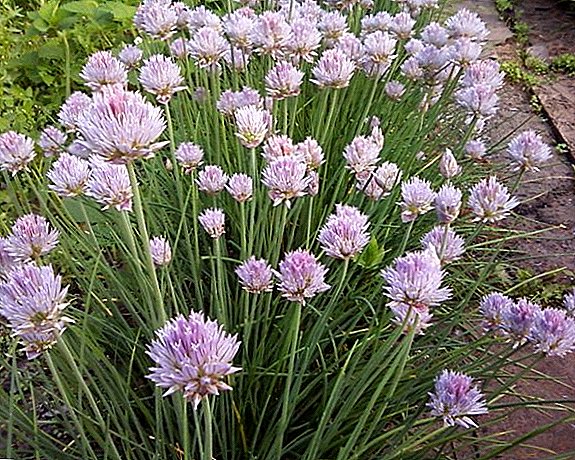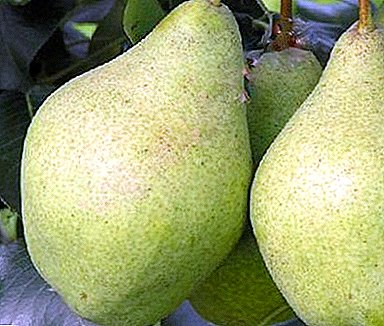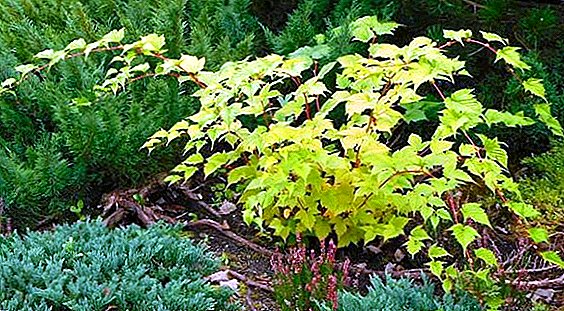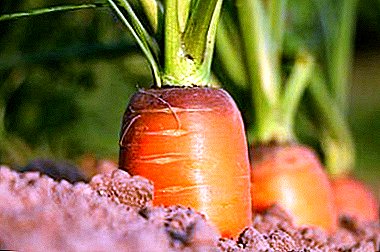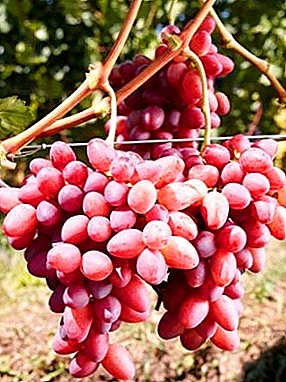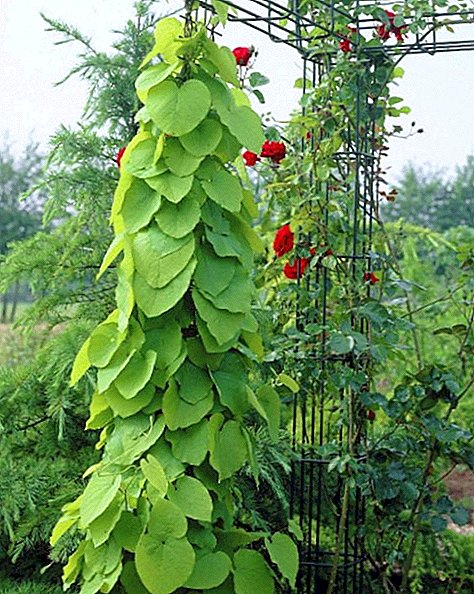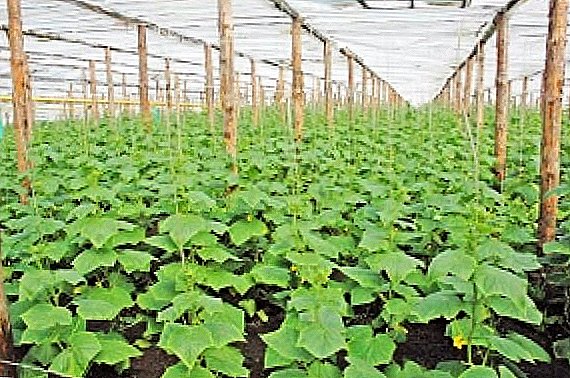
If you walk through the streets of any suburban area, then you can probably find strange buildings of film, glass or polycarbonate.
People have long used these designs, called greenhouses, in order to grow various kinds of crops at any time of the year.
This perspective sounds very tempting, but it requires a lot of time, effort and, unfortunately, money. But in a fairly cool climate it will be difficult to grow a decent crop, for example, cucumbers, which would please your eye. Therefore, it is still worth investing in such a structure, because these costs will pay off in any case.
Growing cucumber in greenhouses is quite a difficult process. There are recommendations that are aimed at the successful completion of the agrarian season with the subsequent receipt of cucumbers with amazing taste and high quality.

Any method of growing various crops, including cucumbers, has its advantages and disadvantages. The greenhouse option falls into this category, so you should pay a little attention to this before you go to buy film or polycarbonate sheets. There are more advantages to this method than minuses.
TO merits Such facts as the possibility of growing cucumbers in the autumn-winter period, the cultivation of these vegetables for sale, as well as the opportunity to grow the most fastidious varieties that used to take root exclusively in the southern regions.
TO disadvantages however, the cost of manufacturing the greenhouse itself can be attributed, and the costs are both labor and financial. There is an opinion that greenhouse cucumbers are inferior in taste to soil. But this statement applies exclusively to those gardeners who do not care too much about their own land and about the plants that live there.
With proper care and care, you can get such a crop of cucumbers, which, both externally, in quality, and in taste, will be several times better than ground cucumbers.
Before planting seeds or seedlings, you should carefully prepare the greenhouse itself, so that later there are no questions about why the crop is bad, or the bushes died.
Preparation of the greenhouse is carried out in the autumn, a few days after the harvest, and is aimed at disinfecting the premises, as well as increasing the soil fertility.
First you need to check whether the whole structure coating. It is especially important to arrange such a test in cold weather, when a meter can tear down some part of the film or a polycarbonate sheet, which is poorly attached to the frame.
It is necessary to remove all debris and all remnants of plants that have been growing in the greenhouse before, and also remove about 5 cm of top soil, since it is in this land that fungus and pests can remain.
Disinfect the ground You can use copper sulfate (solution in 10 liters of water 1 tablespoon of vitriol). The flow rate of the solution should be in the ratio of 10 liters per 15 - 20 square meters. ground. You also need to remember to apply fertilizer in the fall to improve soil fertility. For this you need to 1 square. the meter needs to be spent on 15 - 20 kg of unabated manure, 30 - 40 g of potash and phosphorus fertilizers.
If the soil acidity is high, it is also necessary to add lime of 0.2 - 0.5 kg depending on the degree. Nitrogen fertilizers cannot be applied from autumn. These dressings are done only in spring.

If it was not possible to prepare the soil in the fall, then this process is postponed to spring. In this case, you need to use a special manure, which was subjected to heat treatment in order to avoid the introduction of any fungal or viral diseases.
When spring comes, and planting time will be getting closer and closer, in the case of film greenhouse you need pull the second layer of coatingso that night temperature fluctuations do not harm the very heat-loving cucumber bushes. Cucumber beds should be wide enough (width should be up to 1 m).
There are several options for arranging beds for growing cucumbers.
The first option is the traditional cultivation in the ground, only you first need to make a small longitudinal slide, in which you will need to plant seedlings.
The second and third options are the use of high beds. In these cases, the land will not need to be fertilized in advance, since fertilizers will be the basis for young bushes. The names of these beds are very symbolic - "hot" and "warm." In both cases, you need to make the walls of the ridges with a height of at least 35 centimeters, and the distance between them should be about 60 - 70 centimeters.
In the case of a “hot” bed, a mixture of fresh cow and horse manure must be poured inside such a miniature moat (there is very little horse need). Fertilizers need to fill the loose soil with a layer of about 25 cm, and then pour plenty of water.
In this case, there is no need to harvest the seedlings in advance, but you can immediately sow the seeds into the ground with the calculation of 2 seeds per well and 4 bushes per 1 square meter. m
In the case of compost beds, instead of manure, garden compost should be used, that is, sawdust, old grass, tops. When everything is folded on the bed, it is desirable to use drugs that accelerate the decomposition of organic matter. With this method of cultivation, it is desirable not to drop seeds, but already grown seedlings, and in the same way.

As for the cultivation of cucumber seedlings, everything is simple. It is better to use purchased seeds, as from home seed it is possible not to get fruits with the expected characteristics.
First, the seeds need to soak. To do this, they need to be wrapped in cloth and pour water at room temperature, but the water should only cover the seedlings so that they have access to air. In the water, they must lie down until the first small sprouts appear, that is, before naklevyvaniya.
When the seeds have germinated, they must be placed in a freezer, where the temperature does not fall below -2 ° C. Hardened need to within 48 hours. When these two days pass, the planting material should be immediately placed in the soil. It is better to use peat pots, which can then prikopat together with seedlings, but plastic cups or tapes also go.
It is better to buy a soil in a specialized store, as in its manufacture the land is specially enriched. On 1 capacity should go on 2 seeds. Until the first shoots appear, the air temperature should be within +22 - 28 ° С.
With regard to the timing of planting, you need to remember about the optimal age of the seedlings. He is 21 - 30 days. If the seedlings "sit" in pots longer, then it will be more difficult for them to take root in the ground, and some of them may die.
There is a chance that the seedlings will stretch. This is a sure sign of a lack of light. For this you need provide additional lighting using special lamps. When the first sprouts appear on the surface, the temperature will need to be reduced to a level of +18 - 20 ° С. As the seedlings grow in pots, you will need to add soil.
Cucumber is a very delicate culture, therefore it is impossible to dive seedlings, as this procedure can injure young plants very much. Before planting, seedlings should have a strong central conductor no longer than 30 cm long, short internodes, good roots, as well as 3 - 4 leaves of a dark green color.
It is also interesting to read about self-pollinated varieties of cucumbers.
As for cucumber varieties that can be grown in a greenhouse, the choice is very large. The best known are described below.
Grade "Murashka"

An early hybrid is parthenkarpik (one that does not require pollination).
From the moment the seedlings germinate until they enter fruiting, an average of 42 to 45 days passes.
This variety belongs to the beam cucumbers. Bushes sredneroslye, with limited lateral branching.
Fruits are medium in size, reaching a length of 8–12 cm, bright green in color, with large tubercles and fine black pubescence. Taste is very good, no bitterness. Purpose is universal.
Not affected by both types of powdery mildew.
Sort "Boy with a finger"
An early variety, only 39 days pass from the moment of emergence to the time when the bushes begin to bear fruit.
In plants, the female type of flowering, as well as immunity to the main cucumber diseases. The fruits are beautiful, up to 11 cm in length, gaining 50 to 65 grams in weight, real gherkins. Purpose is universal.
Grade "Benefis"
Mid-season hybrid (43 - 50 days). Self-pollinating, type of flowering - female.
The fruits are weighty, weighing 100–120 g, reaching a length of 10–12 cm, finely tuberous.
Taste is excellent, neither the flesh nor the rind is bitter.
Zelentsy perfectly suited for consumption of both fresh and processed.
At a hybrid resistance to both kinds of mealy dew, and also to root rot is put.
Sort "Alekseich"

Parthenocarpic hybrid, begins to bear fruit very quickly - after 37 - 43 days after the first shoots.
Type of flowering - female.
Bushes are moderately powerful, of the folding type.
Zelentsy are small, up to 60 - 80 g and up to 7 - 8 cm in length.
The taste is very pleasant, so cucumbers of this variety are used in salads, and for salting or pickling.
Hybrid is not affected by either real or downy mildew.
Grade "Emelya"
Early parthenocarpic, hybrid, for maturation it needs 40 - 45 days.
The bushes are indeterminate, the ovaries are laid in bunches, the flowers are mostly female, the stepsons are formed very much.
The fruits have excellent taste. Purpose is universal.
Dripping seedlings can be in the middle - end of May, when the threat of night frosts has already passed, and the temperature is kept quite high.
It is possible to drop 3 - 4 bushes per unit area of the garden so that the plants are not crowded, and they also do not feel a lack of lighting.
Features care for cucumbers
Caring for cucumber bushes in a greenhouse is no different from caring for soil plants. When forming the beds, you need to install a sturdy trellis above each earthen row so that cucumber shoots can be used along it.
First you need to tie up the seedlings. This should be done within 3 to 5 days after transplantation into the ground.
During growth, the shoot needs to be started up on the trellis, and the places of kinks should coincide with interstices.
Be sure to pinch and pinch the bushes so that they do not gain too much vegetative mass.
Each bush is formed into one stem. When the length of the central shoot is 20-30 cm higher than the support, then it's time to pinch it. The bottom 2 - 3 stepsons must be removed along with all the flowers. The following 5 - 6 stepsons should be cut at the level of the first sheet.
Side shoots that grow in the middle of the shoot, you need to cut over the second sheet, and those that are on top - above the third. After these stepsons are removed or trimmed, the plant will start up new ones, called second-order stepchildren. Lower steps need to be removed altogether, medium ones should be cut at the level of the first leaf, the upper ones should be cut at the level of the second.
It is extremely important to properly water the bushes in greenhouse conditions, since these plants do not "love" the high humidity. It all depends on weather conditions.
If the weather is very warm and sunny, then watering should be done every day with the calculation of 5 - 10 liters of water per square meter. m. When it is overcast on the street, watering can be done every few days. It is better to perform this procedure in the evening when the water temperature reaches its optimum.
Temperature control plays a very important role in the process of growing cucumber culture. If the air temperature is high enough, it will be difficult to lower it in the greenhouse. To do this, cover the roof with sheets of plywood or cardboard. In the case of a glass greenhouse, everything is much simpler.

It is enough to chalk the roof, and the white color will reflect the sun's rays. Airing will help to equalize the temperature, so at + 15-35 ° С the doors and window leaves of the greenhouse can be left open.
It is necessary to constantly check the temperature of the soil, as it should be kept at + 16-18 ° С. Otherwise, various diseases and fungi are activated, which will gradually affect cucumber bushes. It is necessary to fertilize the soil during the growth and development of the Kuts.
The first dressing should be done before the bushes begin to bloom. In this case, you need to make nitrogen fertilizers or a solution of chicken manure. After 2 weeks, you need to fertilize a second time, but only potassium and phosphate fertilizers should be added to nitrogen.
At all, cucumbers do not "love" excess fertilizer and may react poorly to fertilizing. And especially if you grow bushes in high beds, then fertilization should be done only as a last resort, when there are signs of a lack of one or another element.
Growing cucumbers in a greenhouse is not as difficult as it may seem at first glance. It is enough just to remember the simple rules and recommendations that will help you get a decent harvest, which is not ashamed not only to put on your table, but also to sell. Successes in your undertakings!


